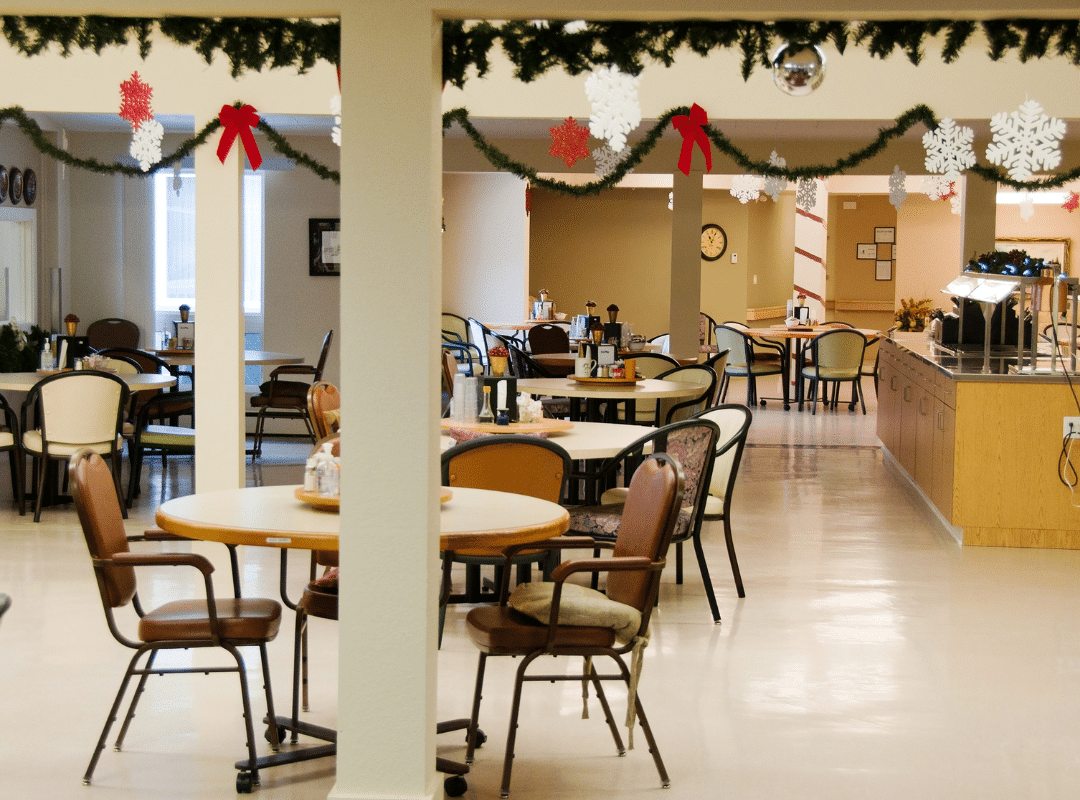Common Area Assisted Living: Safe & Social Spaces
While the comfort of private rooms offers solitude, common areas at The Westland House are essential in fostering community.
These spaces promote safety and encourage social interaction among residents, which can significantly enhance their emotional well-being. Understanding the importance of these environments can help you make informed decisions about care options for your loved ones.
What features should you look for at The Westland House to guarantee a supportive and engaging atmosphere?
Why Common Areas Matter in Assisted Living: A Guide for Families
When considering assisted living options for a loved one, it’s crucial to recognize the significant role that common areas play in fostering a sense of community and belonging. These spaces are fundamental for encouraging social interaction and providing residents with opportunities to connect and form friendships. By engaging in activities within these communal settings, your loved one can combat feelings of isolation and enhance their emotional well-being.
Moreover, common areas often host events that promote community engagement, allowing residents to participate actively in their new environment. You’ll notice that when residents gather for meals, games, or classes, they share experiences that enrich their lives. Ultimately, these interactions create a supportive network, making assisted living feel like home for your loved one. Additionally, facilities like The Westland House prioritize personalized supportive services, ensuring that each resident receives the care and companionship they need to thrive.
What Is Assisted Living vs Nursing Home? Understanding the Key Differences
While assisted living and nursing homes provide essential support for seniors, they cater to different needs and lifestyles. Understanding these differences can help you choose the right environment for your loved ones.
- Level of Care: Assisted living offers personal assistance with daily activities while promoting independence. Nursing homes provide more intensive medical care for those with serious health issues.
- Social Environment: Assisted living emphasizes community and social interaction with shared spaces and activities. Nursing homes often focus on medical care, which can limit social opportunities.
- Living Arrangements: Assisted living typically features apartment-style living, fostering a home-like atmosphere. Nursing homes usually have shared rooms and focus more on care than comfort. Additionally, many assisted living facilities in Westland offer financial assistance programs to help residents manage costs effectively.
5 Levels of Care in Assisted Living: A Breakdown of Support Options
Assisted living offers a range of care levels tailored to meet individual needs, ensuring seniors receive the right amount of support. Understanding these support levels is essential for providing appropriate care options. Additionally, financial assistance programs like Medicaid coverage can help mitigate costs associated with various levels of care.
| Support Level | Description |
| Independent Living | Minimal assistance, focus on autonomy |
| Assisted Living | Help with daily activities like bathing and medication management |
| Memory Care | Specialized support for cognitive impairments, ensuring safety and engagement |
Who Qualifies for Assisted Living? Eligibility, Needs, and Requirements
Determining eligibility for assisted living involves understanding individual needs and circumstances. Your loved one might qualify based on specific Eligibility Criteria and a thorough Needs Assessment. Here are three key factors to evaluate:
- Health Status: Individuals needing assistance with daily activities, such as bathing, medication management, or mobility, often qualify.
- Cognitive Function: Those with mild cognitive impairments may also be eligible if they can benefit from supportive services.
- Social Support: A lack of adequate support at home can make assisted living a suitable option for fostering social interaction and engagement. Additionally, understanding the associated costs of assisted living is crucial for making informed decisions about care options.

When to Move from Assisted Living to a Nursing Home: Signs It’s Time
Knowing when to move from assisted living to a nursing home can be challenging, significantly when your loved one’s needs evolve. Pay attention to signs of health decline, such as frequent hospital visits, worsening chronic conditions, or increased dependency on daily tasks like bathing or eating. If your loved one requires more medical attention than the assisted living facility can provide, it may be time to contemplate a nursing home. Additionally, this shift might be necessary if safety becomes a concern—like falls or wandering. Recognizing these changes early is crucial, allowing you to make informed decisions prioritizing your well-being. Ultimately, the goal is to guarantee your loved one receives the care and support they need.
Safety and socialization seamlessly intertwine in the vibrant world of common-area assisted living at The Westland House. These supportive spaces shield residents and spark joyful interactions, fostering flourishing friendships. As you explore options for your loved ones, remember that a nurturing environment can make all the difference in their daily lives. Prioritizing these communal areas enhances emotional well-being, ensuring every moment spent together is filled with laughter, love, and lasting connections. For more information, feel free to contact us at 734-326-6537.
Frequently Asked Questions
What is the main purpose of having common areas in assisted living settings?
Common areas in assisted living settings are designed to encourage socialization, engagement, and a sense of community among residents. These spaces, including lounges, dining areas, activity rooms, and outdoor gardens, provide opportunities for residents to interact with others and participate in group activities. They also promote mental and emotional well-being by reducing isolation and encouraging active lifestyles. Additionally, common areas serve as a welcoming environment for family visits, fostering connections between residents and their loved ones.
How do you pay for assisted living when you have no money?
For individuals with limited financial resources, there are several options to help cover the cost of assisted living. Medicaid programs in many states offer financial assistance for those who qualify, mainly through Home and Community-Based Services (HCBS) waivers. Veterans and their spouses may be eligible for benefits through the VA’s Aid and Attendance program. Some individuals may also explore long-term care insurance, bridge loans, or state assistance programs to help cover expenses. Families often contribute financially or work with social services to find affordable options within their means.
When won’t parents go to assisted living?
Many older adults resist moving to assisted living due to emotional attachments to their home, fear of losing independence, or concerns about affordability. Some may also be unaware of the benefits assisted living can provide, such as social opportunities, personalized care, and safety measures. Family dynamics and cultural values may play a role in the reluctance, with some individuals preferring to receive care from family members. Addressing these concerns with open communication, touring facilities, and involving parents in decision-making can help ease the transition.
What are the three levels of assisted living?
Assisted living typically offers three levels of care to meet varying needs: low, moderate, and high care levels. Low-level care is for mostly independent residents who need minor assistance with daily activities, such as meal preparation and medication reminders. Moderate-level care includes more hands-on assistance with personal care, mobility, and increased supervision. High-level care is designed for residents with more complex needs, such as advanced mobility limitations, memory care requirements, or 24-hour assistance with daily activities.

